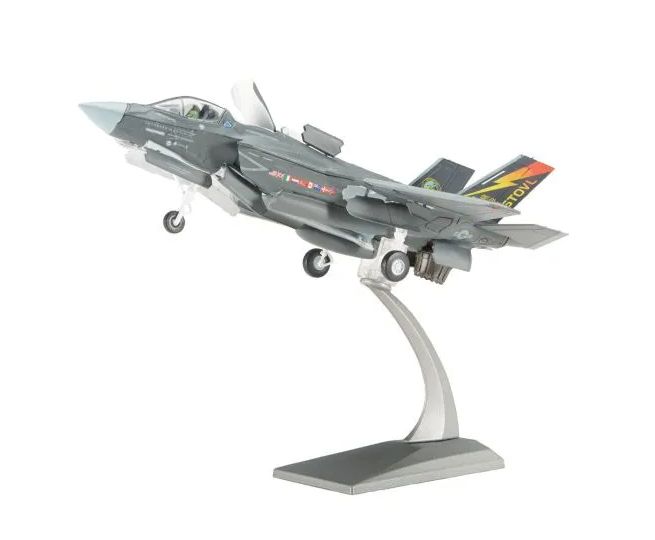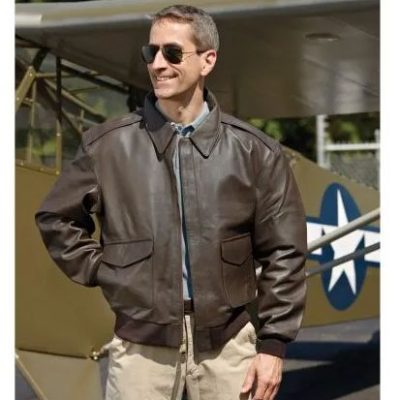Description
F-35B Lightning II Die-Cast Model
Type of Aircraft: The F-35 Lightning is a single-seat, single-engine, all-weather stealth multi-role combat aircraft that is intended to perform both air superiority and strike missions. The F-35A has the ability of three takeoff- conventional, the short take-off and vertical-landing (STOVL) F-35B, and the carrier-based (CV/CATOBAR) F-35C.
Nation of Origin: USA for USN (F-35C), USMC (F-35B), and USAF (F-35A)
Period Operation: In NATO Flee of Operational Aircraft and the F-35 Lightning was first used in combat in 2018 by the Israeli Air Force
Produced: From: 2006 to Present. The U.S. plans to buy 2,456 F-35s through 2044. The F-35 Lightning is expected to be in service until 2070.
Role: Multi Role Bomber fighter, escort, Close Air Support, and Reconnaissance. In the movie TOPGUN: MAVERICK the bogies that intercepted Maverick and Rooster F-14 Tomcat was the F-35. One of the maneuvers that the F-35 Lightning performed was what is called a Stall-drift maneuver just after the F-35 Lightning flew past the Tomcat over the water. Rooster was impress with the F-35 Lightning capability to perform special maneuvers.
Manufacturer: Lockheed Martin and Northrop Grumman Corporations
Historical Data of Aircraft:
From Wikipedia, the free encyclopedia
The Lockheed Martin F-35 Lightning II is an American family of single-seat, single-engine, all-weather stealth mult-irole combat aircraft that is intended to perform both air superiority and strike missions. It is also able to provide electronic warfare and intelligence, surveillance, and reconnaissance capabilities. Lockheed Martin is the prime F-35 contractor, with principal partners Northrop Grumman and BAE Systems. The aircraft has three main variants: the conventional takeoff and landing (CTOL) F-35A, the short take-off and vertical-landing (STOVL) F-35B, and the carrier-based (CV/CATOBAR) F-35C.
The aircraft descends from the Lockheed Martin X-35, which in 2001 beat the Boeing X-32 to win the Joint Strike Fighter (JSF) program. Its development is principally funded by the United States, with additional funding from program partner countries from the North Atlantic Treaty Organization (NATO) and close U.S. allies, including the United Kingdom, Australia, Canada, Italy, Norway, Denmark, the Netherlands, and formerly Turkey.Several other countries have also ordered, or are considering ordering, the aircraft. The program has drawn much scrutiny and criticism for its unprecedented size, complexity, ballooning costs, and much-delayed deliveries.The acquisition strategy of concurrent production of the aircraft while it was still in development and testing led to expensive design changes and retrofits.
The F-35 first flew in 2006 and entered service with the U.S. Marine Corps F-35B in July 2015, followed by the U.S. Air Force F-35A in August 2016 and the U.S. Navy F-35C in February 2019. The aircraft was first used in combat in 2018 by the Israeli Air Force. The U.S. plans to buy 2,456 F-35s through 2044, which will represent the bulk of the crewed tactical aviation of the U.S. Air Force, Navy, and Marine Corps for several decades; the aircraft is planned to be a cornerstone of NATO and U.S.-allied air power and to operate until 2070.
The F-35 was the product of the Joint Strike Fighter (JSF) program, which was the merger of various combat aircraft programs from the 1980s and 1990s. One progenitor program was the Defense Advanced Research Projects Agency (DARPA) Advanced Short Take-Off/Vertical Landing (ASTOVL) which ran from 1983 to 1994; ASTOVL aimed to develop a Harrier jump jet replacement for the U.S. Marine Corps (USMC) and the U.K. Royal Navy. Under one of ASTOVL’s classified programs, the Supersonic STOVL Fighter (SSF), Lockheed Skunk Works conducted research for a stealthy supersonic STOVL fighter intended for both U.S. Air Force (USAF) and USMC; a key technology explored was the shaft-driven lift fan (SDLF) system. Lockheed’s concept was a single-engine canard delta aircraft weighing about 24,000 lb (11,000 kg) empty. ASTOVL was rechristened as the Common Affordable Lightweight Fighter (CALF) in 1993 and involved Lockheed, McDonnell Douglas, and Boeing.





